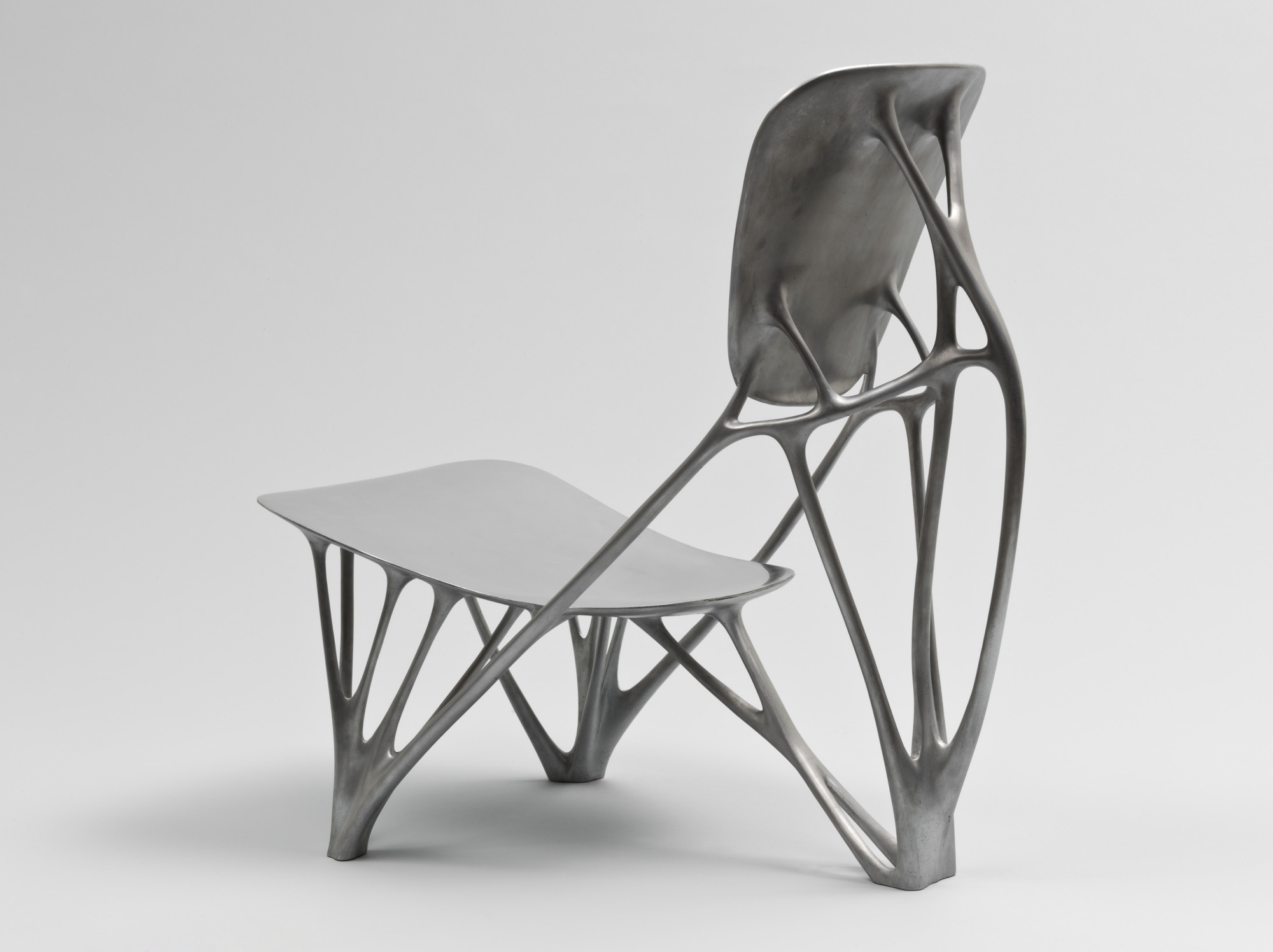At its surface, generative art doesn’t mean much to me. As a design-oriented person, I appreciate beautiful things, yet they are most meaningful to me when they are rooted in some practical function. However, I have found an example of generative art that provides enough practical use to satisfy me – Joris Laarman’s ‘Bone Chair’.

This chair is a piece of furniture resulting from a specially designed computer algorithm, used to structure supports in a way that mimics the natural growth of bones and trees. Starting with a chunk of material and virtually applied forces, the algorithm slowly removes material where it is not structurally significant, leaving behind only the most essential material for the given position of the furniture. As you might imagine, the final product feels machine-made in its precision and finish. However, this sculpting technique effectively captures the innate beauty of natural, irregular structures while simultaneously ensuring comfort and strong support. This algorithm draws me to the world of algorithmic art, since it shows me how digitally crafted art does not have to feel unnatural or impractical – if anything, it can streamline the integration of biomimicry into common objects around us in unexpected ways. And that, I find very exciting.
![[OLD FALL 2020] 15-104 • Introduction to Computing for Creative Practice](wp-content/uploads/2021/09/stop-banner.png)